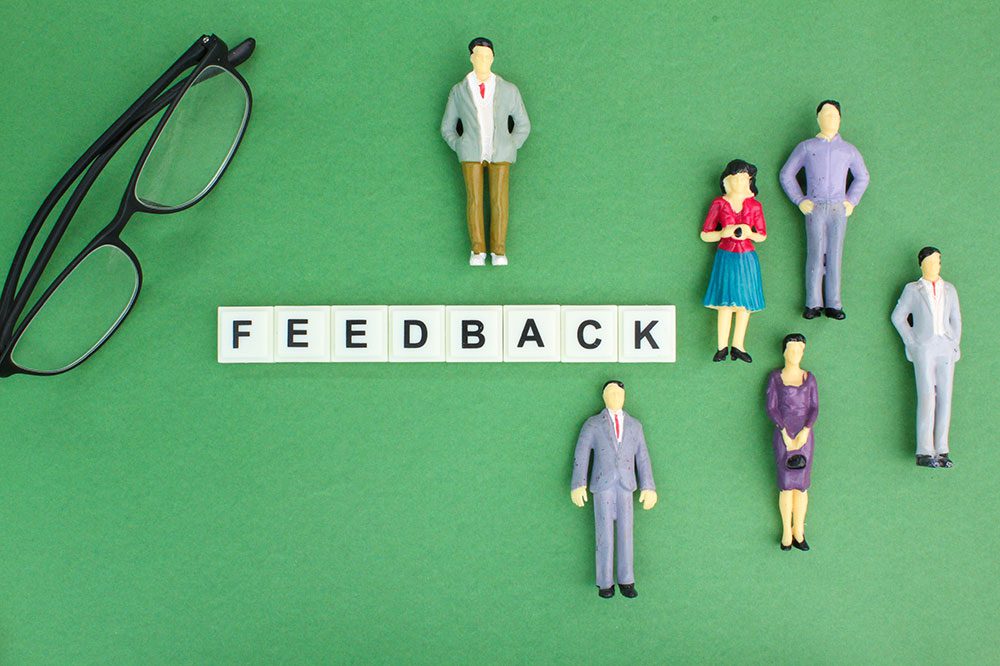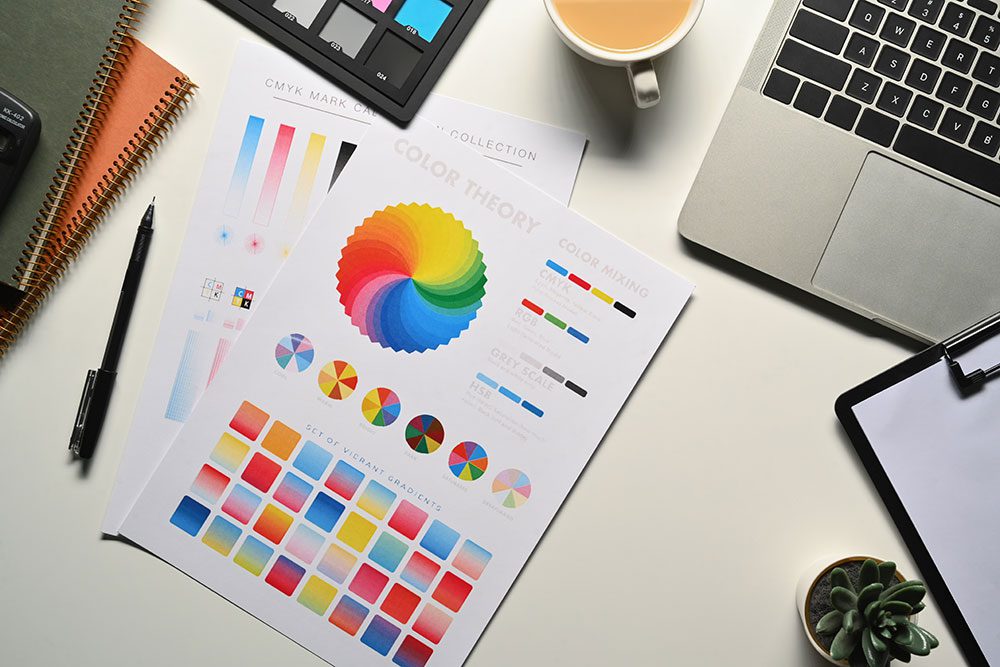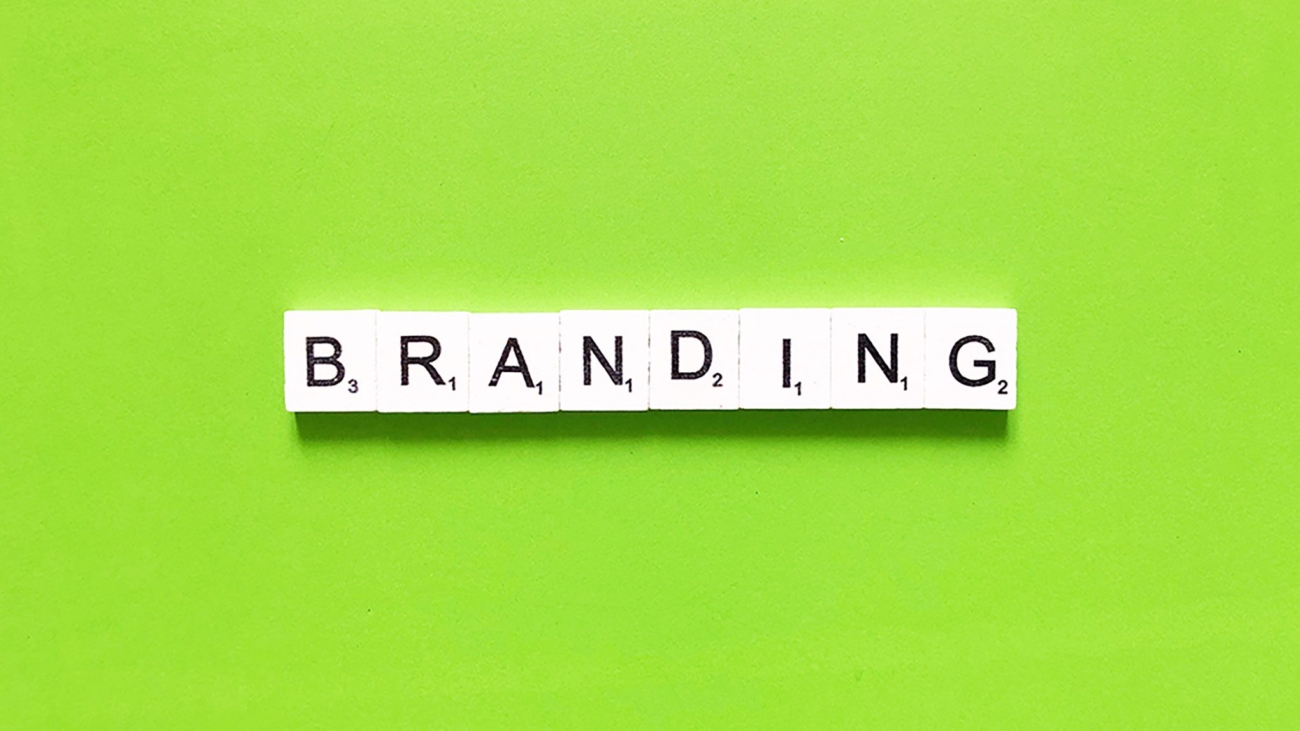Steps to Define Your Brand’s Tone
A. Identify Situational Contexts
While your brand voice is consistent, your tone may shift depending on the context or platform. Consider the different types of content or communication your brand will engage in:
- Marketing Campaigns: The tone here could be energetic, persuasive, and exciting.
- Customer Service: The tone might be empathetic, calm, and helpful.
- Social Media: The tone may be lighthearted, humorous, and engaging.
- Announcements: The tone for important company news might be formal and informative.
The goal is to maintain a consistent voice but adjust the tone to suit the audience’s needs and the platform’s norms.
B. Create a Tone Map
Develop a tone map that outlines how your tone should vary in different scenarios. For example, your tone could be more formal when addressing serious issues or more playful when engaging on social media. A tone map might look like this:
- Situation: Responding to customer complaints
- Tone: Empathetic, apologetic, solution-focused
- Situation: Promoting a product on Instagram
- Tone: Fun, energetic, and encouraging
- Situation: Launching a new product to stakeholders
- Tone: Professional, informative, and confident
This mapping ensures your brand stays adaptable while still reflecting its core identity.
C. Tailor Tone to Different Channels
Different communication platforms require different tones to ensure your message is effective. Consider how tone might shift depending on the platform:
- Social Media: Typically, more casual and conversational. Your tone can be playful or interactive to engage users.
- Website Content: More structured and professional, though still aligned with your brand voice.
- Email Marketing: Your tone can range from personal and conversational to professional and sales-oriented, depending on the content of the email.
- Customer Support: Friendly, respectful, and empathetic. Even when delivering difficult news, maintaining a positive and helpful tone is crucial.

D. Monitor and Adapt Over Time
As your brand grows, your tone may need to evolve. Periodically review how your audience is responding to your brand’s communication style. Are there opportunities to be more engaging? Should your tone shift based on new trends or customer expectations? Continuously monitor audience feedback and adapt as necessary.
Examples of Brand Voice and Tone
- Mailchimp: Mailchimp’s brand voice is conversational, friendly, and witty. Their tone varies depending on the platform — playful in social media content, informative in blog posts, and empathetic in customer service communications.
- Slack: Slack’s voice is human and accessible, designed to make work more pleasant. Their tone can be lighthearted and playful in their marketing but shifts to helpful and supportive in customer service.
- Airbnb: Airbnb has a welcoming and inclusive voice that aligns with its mission of creating a sense of belonging. Their tone is warm and inviting across their platform, with a professional tone used for business updates and customer support interactions.
Tips for Crafting an Effective Brand Tone and Voice
- Be Authentic: Your voice and tone must feel genuine to your brand’s identity. Avoid adopting a tone that doesn’t match your brand personality or what your audience expects.
- Stay Consistent: Consistency in both voice and tone ensures that your audience recognizes your brand, no matter where they encounter it. Use your brand voice guide to maintain uniformity across all channels.
- Be Adaptable: While your voice remains the same, your tone should adapt based on context and audience. Find the right balance to remain authentic yet responsive to the situation.
- Test and Refine: Continuously gather feedback from your audience to understand how your voice and tone resonate. Don’t be afraid to tweak and refine over time.

7- Aligning Brand Personality with Customer Expectations
This part involves ensuring that your brand’s human-like traits resonate with what your target audience desires and expects from a company in your industry. A well-aligned brand personality enhances customer engagement, fosters trust, and strengthens loyalty by creating an emotional connection. Here’s how you can achieve this alignment:
Understand Your Customer’s Values and Preferences
Before aligning your brand personality with customer expectations, you need to have a deep understanding of your audience’s values, preferences, and behaviors. Start by asking:
- What do my customers care about most?
- What motivates them to choose my product or service?
- How do they perceive brands in my industry?
- What are their pain points and needs?
Gathering this information through customer research, surveys, or market analysis allows you to tailor your brand personality to meet their expectations.
Example: If your target audience is young, eco-conscious individuals, your brand personality should reflect values like sustainability, transparency, and social responsibility.
Conduct Market Research on Customer Expectations
To align brand personality with customer expectations, you need insights into what your audience expects from brands in your industry. Conduct surveys, focus groups, and social media listening to identify:
- The language they use to describe brands they trust.
- The qualities they admire (e.g., authenticity, innovation, friendliness).
- What frustrates them about brands (e.g., dishonesty, slow customer service).
With this research, you can fine-tune your brand personality to mirror qualities your customers expect.
Example: Research might reveal that your audience prefers a brand that is responsive, approachable, and authentic. If your brand appears cold or disconnected, it will struggle to resonate with them.

Reflect Customer Aspirations in Your Brand Personality
Customers are drawn to brands that represent something they aspire to be. Aligning your brand personality with these aspirations makes your brand feel more relatable and desirable. Consider:
- What do my customers want to be? (e.g., bold, successful, healthy)
- How does my brand help them achieve their goals?
By crafting a personality that reflects these aspirations, you position your brand as a partner in helping customers reach their goals.
Example: Nike’s personality is empowering, bold, and athletic, aligning with its customers’ aspirations to be strong, confident, and successful in their fitness goals.
Maintain Authenticity
While it’s important to align with customer expectations, your brand personality should remain authentic to your core values and identity. Misaligning or pretending to be something you’re not can backfire and erode trust. Customers appreciate brands that are genuine and transparent.
- Stay true to your brand’s mission and values.
- Avoid overpromising or presenting a false image that doesn’t align with your actual offerings.
Example: A brand that promotes sustainability but fails to implement environmentally friendly practices will lose credibility, no matter how well their personality aligns with customer expectations.
Ensure Consistency Across All Touchpoint
Your brand personality should shine consistently across all customer touchpoints — from your website and social media to customer service interactions. Inconsistent personality can confuse customers and weaken brand trust. Ensure that:
- Your messaging across all platforms reflects the same voice and tone.
- Your visuals (colors, design) align with the personality traits you want to convey.
- Your customer service team interacts with customers in a way that mirrors your brand’s traits (e.g., friendly, professional, supportive).
Example: If your brand personality is fun and approachable, your website copy, social media interactions, and customer service emails should reflect the same lighthearted, friendly tone.

Adapt to Customer Feedback
As customer expectations evolve, so should your brand personality. Regularly monitor feedback from your audience and adjust your brand personality where necessary to stay relevant.
- Listen to customer reviews and comments on social media to gauge how well your personality aligns with their expectations.
- Adjust your tone and voice based on their feedback, but make sure to remain authentic to your core identity.
Example: If customers express that your brand feels too formal or disconnected, you might want to adjust your tone to become more conversational and relatable.
Create Emotional Connections
A well-aligned brand personality should evoke the right emotions in your customers. Emotion plays a significant role in customer decision-making, and brands that forge emotional connections tend to foster stronger loyalty. Ask yourself:
- What emotions do I want my brand to evoke? (e.g., excitement, trust, comfort)
- What emotions do my customers expect or desire when interacting with brands like mine?
Once you’ve identified the emotions that resonate with your audience, infuse them into your brand personality to create an emotional connection.
Example: Disney evokes feelings of wonder, magic, and nostalgia, aligning with customer expectations of a brand that offers joyful and memorable experiences.
Stay Adaptable but Grounded
While it’s important to align with customer expectations, your brand should not feel reactionary or inconsistent. Your personality should be adaptable to evolving trends and customer preferences, but still grounded in your core identity.
Example: A brand in the technology space might want to adopt a more innovative and cutting-edge personality to align with customer expectations of progressiveness, while still maintaining its core values of simplicity and accessibility.

Step 3- Designing the Visual Identity
This is the process of creating the aesthetic elements that represent your brand and convey its personality to the world. This includes your logo, color palette, typography, imagery, and other visual components that help communicate your brand’s message and values to your audience. A strong visual identity helps your brand stand out in a crowded market.
Here’s a breakdown of the key steps and elements involved in designing a compelling visual identity
Understand Your Brand Personality and Values
Before diving into visual design, you need to have a clear understanding of your brand’s core identity, values, and personality. Ask yourself:
- What does my brand stand for?
- What emotions should my brand evoke?
- What key message should my visuals communicate?
Your brand’s visual identity should align with your personality traits and reflect your mission and vision. For instance, a playful and youthful brand may opt for bold colors and fun typography, while a more serious and professional brand may choose muted tones and clean, elegant fonts.
Example: A brand with a mission of sustainability might incorporate earth tones (greens, browns) and natural imagery in its visual identity.
Create a Memorable Logo
The logo is often the most recognizable part of your visual identity. It serves as the face of your brand and should be simple, memorable, and versatile. A strong logo design:
- Represents your brand’s essence: Your logo should visually convey what your brand is about and create an instant association with your brand values.
- Is adaptable: The logo should be designed in a way that works across various mediums (websites, packaging, social media) and sizes without losing clarity.
- Is timeless: Avoid overly trendy designs that might quickly become outdated. A well-designed logo should remain relevant for years to come.
Types of Logos
- Iconic logos: Represent your brand with a simple, recognizable image (e.g., Apple, Nike).
- Text-based logos: Feature your brand name in a custom font (e.g., Coca-Cola, Google).
- Combination marks: Combine both an icon and text (e.g., Adidas, Starbucks).
Example: Nike’s swoosh logo is an iconic representation of movement and athleticism, aligning perfectly with the brand’s identity.
Choose a Distinctive Color Palette
Color plays a powerful role in influencing how your audience perceives your brand. Different colors evoke different emotions and can be used to reinforce your brand’s personality. When choosing a color palette, consider:
- Psychology of colors: Certain colors are associated with specific emotions or ideas (e.g., blue evokes trust and professionalism, red symbolizes passion and energy).
- Your industry norms: While you want to stand out, it’s important to choose colors that fit within the expectations of your industry.
- Brand consistency: Select a primary log that will be used consistently across all brand materials, with a few accent colors for flexibility.
Example: Coca-Cola uses red to evoke feelings of excitement and passion, while Facebook uses blue to convey trust and reliability.

Select Appropriate Typography
Typography is another key element of your visual identity. The fonts you choose should reflect your brand’s personality and be easy to read across different platforms. There are two main categories of fonts:
- Serif fonts: These fonts have small lines or strokes at the ends of letters (e.g., Times New Roman). They often convey tradition, reliability, and professionalism.
- Sans-serif fonts: These fonts lack the strokes at the ends of letters (e.g., Arial, Helvetica) and have a more modern, clean, and approachable feel.
Your typography should be:
Consistent: Use the same fonts across your website, marketing materials, and social media for brand uniformity.
Readable and scalable: Ensure your font is legible in various sizes and formats (from mobile devices to billboards).
Example: The New York Times uses a traditional serif font to align with its image as a serious, reputable news organization, while tech brands like Google and Apple often opt for sans-serif fonts for a clean and modern look.
Establish a Consistent Style for Imagery
Imagery is an important part of your visual identity and includes any photos, illustrations, or graphics that your brand uses. Consistency in the style of imagery you choose helps create a cohesive look across your brand’s materials. Key considerations include:
- Photo style: Are your images clean and minimalist, or vibrant and energetic? Do they evoke warmth, professionalism, or creativity?
- Use of graphics: Do you incorporate illustrations, icons, or other graphic elements in your visual materials? If so, ensure that they align with your brand’s aesthetic and personality.
- Diversity and representation: Ensure your imagery is inclusive and representative of your target audience to create a stronger connection with your customers.
Example: Airbnb uses warm, inviting photos of real homes and people, reinforcing their brand’s mission of belonging and creating a home-away-from-home experience.
Develop a Visual Brand Guide
Once the key elements of your visual identity are established, document them in a visual brand guide. This guide ensures that your brand visuals are used consistently across all platforms and by everyone on your team. Your visual brand guide should include:
- Logo usage guidelines: Specify how and where the logo can be used, including acceptable variations, size restrictions, and color options.
- Typography rules: Provide details on which fonts are used for headings, body text, and any other content types.
- Imagery style: Outline the type of imagery that fits your brand and how it should be sourced or created.
- Design principles: Provide guidance on layout, spacing, and other design rules to ensure brand visuals remain clean and cohesive.
Example: Companies like Google and Coca-Cola have extensive brand guides to ensure their visuals stay consistent across different geographies and media.

Incorporate Motion and Video Elements
If your brand uses video or motion graphics, these elements are increasingly important in shaping your visual identity. Consider how your logo, typography, and colors come to life in video content or animations. Motion elements should:
- Reflect your brand personality: Whether your brand is fast-paced and energetic or calm and thoughtful, your video content and animations should align with that vibe.
- Be consistent: Use the same colors, fonts, and style in all video and motion content.
Example: Slack’s onboarding animations are friendly, colorful, and smooth, aligning with the brand’s approachable and collaborative personality.
Test and Iterate
Finally, once your visual identity is in place, it’s essential to test how it resonates with your audience. Gather feedback through surveys, A/B testing, or focus groups to see if your visuals are having the desired impact. Based on the feedback, make necessary adjustments to ensure that your visual identity truly connects with your audience and reflects your brand effectively.

8- Logo Guidelines- Usage, Spacing, and Placement
It is essential to maintain the integrity of your brand’s visual identity. Establishing clear rules ensures your logo is presented consistently across all platforms and mediums, which strengthens brand recognition and professionalism. Here’s a detailed breakdown of what to consider when developing logo guidelines
Logo Usage
Your logo is the cornerstone of your brand’s visual identity, so it’s crucial to outline proper usage to maintain its clarity and impact.
- Primary and Secondary Logos: Most brands have a primary logo (the main version) and secondary variations (e.g., monochrome, icon-only versions) for different applications.
- Primary logo: The full-color, full-version logo used in most situations.
- Secondary logo: Used when space or background limitations require a simpler or more compact version (e.g., favicon, small icons).
- Color Variations:
- Specify how your logo should appear on different background colors. For example, provide full-color, black, and white (or inverted) versions to ensure the logo remains visible and legible across different mediums.
- Avoid color combinations that obscure the logo or clash with its design.
- Clear Instructions on Modifications:
- Your guidelines should explicitly state that the logo should not be altered in any way. This includes:
- Changing the logo’s colors, aspect ratio, or proportions.
- Adding effects like shadows, gradients, or outlines.
- Using the logo in unapproved orientations (e.g., rotating, flipping).
- Your guidelines should explicitly state that the logo should not be altered in any way. This includes:
Example: Instagram’s logo is strictly defined with color and positioning, and it has different approved versions (e.g., multicolor for normal use, monochrome for when simplicity is needed).
Logo Spacing (Clear Space)
Clear space around the logo ensures that it remains legible and visually prominent by preventing crowding from other elements such as text, images, or other design components. It also helps maintain the logo’s visual balance and allows it to stand out.
- Define the Minimum Clear Space:
- Specify the minimum amount of space that must surround the logo to prevent interference. This is usually measured relative to part of the logo itself (e.g., the height of a letter in the logo or a part of the icon).
- Ensure that no other elements (text, images, graphics) enter this clear space.
- The minimum clear space should apply in all contexts, whether in digital applications (like websites or apps) or print.
Example: Apple’s logo guidelines define a clear space around the apple icon equivalent to half the height of the logo, ensuring that no design elements encroach on the logo’s space.

Logo Placement
The correct placement of your logo on various materials (such as websites, packaging, business cards, and more) ensures brand consistency. Placement guidelines should provide clarity on where to position the logo for optimal visibility and brand Image.
- Common Placement Locations:
- Top-left corner: Typically, logos are placed in the top-left corner of websites, apps, or other digital platforms, as this is where people’s eyes tend to go first.
- Center: Some brands opt to center their logo for emphasis in certain applications like business cards or banners.
- Bottom-right corner: This can be used for more subtle branding on promotional materials or internal documents.
- Horizontal vs. Vertical Orientation:
- Depending on the layout or medium, you may need to adjust the orientation of your logo. Some logos come in both horizontal (wide) and vertical (stacked) versions. Guidelines should specify which version to use in each context.
- Provide clear rules for vertical and horizontal placement to avoid awkward or cramped logo placements.
- Specific Mediums:
- Digital platforms: Explain logo placement on websites, apps, and email signatures.
- Print: Provide placement instructions for business cards, letterheads, posters, and brochures.
- Merchandise and products: Offer rules for placement on physical products (e.g., t-shirts, packaging) to ensure visibility and readability.
Example: Coca-Cola’s logo guidelines dictate placement on product packaging, specifying that the logo should always be prominently displayed and never distorted.
Minimum Size Requirements
To ensure that the logo remains legible across various formats, guidelines should define the minimum size for the logo.
- Print Media: Specify the smallest size the logo can be printed while remaining legible. Typically, this is measured in millimeters or inches.
- Digital Media: Define the minimum pixel dimensions for online usage to ensure clarity and legibility on websites, apps, or social media.
Example: Google’s logo guidelines specify that the logo should not be used smaller than 24 pixels in height on digital platforms to ensure readability.

Background Usage
- Appropriate Background Colors: Provide guidance on acceptable background colors to maintain visibility. The logo should contrast clearly with the background.
- Unacceptable Backgrounds: Avoid placing the logo on busy or patterned backgrounds that make it hard to read.
- Background Alternatives: For darker or busier backgrounds, provide a monochrome or inverted version of the logo to ensure legibility.
Example: Starbucks uses a green logo on light backgrounds and a white version of the logo on dark backgrounds for readability and consistency.
Logo Do’s and Don’ts
Provide clear visual examples of correct and incorrect logo usage. This helps ensure that your logo is always used properly by designers, marketers, or third parties. Some common examples of what to avoid include:
- Stretching or skewing the logo: The logo must always maintain its original proportions.
- Changing the logo colors: Only the approved color variations should be used.
- Adding effects or filters: No drop shadows, glows, or other effects should be applied to the logo.
- Placing the logo on clashing backgrounds: The logo should always be placed on backgrounds that provide enough contrast for clear visibility.
Example: Spotify’s guidelines give clear “don’ts” such as altering the green and black colors or adding shadows, gradients, or textures to the logo.
Co-Branding Guidelines
If your logo is used alongside partner or sponsor logos, ensure there are rules for co-branding.
- Size and Proportion: Specify that your logo should remain proportionate to other logos and not be scaled down disproportionately.
- Spacing: Maintain proper spacing between your logo and the partner logo to avoid overlap or confusion.
Example: When used in collaboration with other companies, Apple’s logo guidelines ensure that the Apple logo maintains dominance and is not overshadowed by partner logos.
Logo guidelines ensure that your brand’s logo is used consistently and correctly, preserving its integrity across all media. By providing clear instructions on usage, spacing, placement, and minimum sizes, you help maintain a cohesive visual identity that reinforces brand identity and builds trust. A detailed brand guide with visual examples of correct and incorrect logo usage is a valuable tool for internal teams and external partners.

9- Choosing a Color Palette and Its Psychological Impact
Selecting the right color palette for your brand is a crucial aspect of defining its identity and how customers perceive it. Colors evoke emotions, associations, and psychological responses, which influence how people connect with and remember a brand. By carefully choosing a color scheme that aligns with your brand’s values and personality, you can create a strong emotional impact and drive customer engagement.
Importance of a Brand Color Palette
- Recognition and Consistency: Your brand’s colors become associated with your identity. Consistent use of a color palette across all platforms ensures cohesiveness in marketing materials, websites, products, and social media.
- Differentiation: A unique color scheme sets your brand apart from competitors, making it easily distinguishable.
- Emotional Connection: Colors have a psychological impact that can shape how people feel about your brand. They can convey trust, excitement, calmness, or energy, depending on the hues chosen.
Psychological Impact of Colors
Each color triggers different emotions and associations. Understanding the psychological effects of different colors can help you convey the right message to your audience.
Red
- Psychological Effect: Energy, excitement, urgency, passion, and action.
- Associations: Red is often associated with brands that want to convey boldness or inspire action. It can also evoke emotions like love and passion or, in some contexts, signal caution.
- Best Used By: Food brands (like Coca-Cola), sports brands (like Nike), or retail stores for sales and promotions.
Example: Coca-Cola uses red to evoke excitement, passion, and energy, which ties into the brand’s identity as fun, refreshing, and invigorating.
Blue
- Psychological Effect: Trust, calmness, professionalism, reliability, and security.
- Associations: Blue is associated with trustworthiness, authority, and dependability. It’s commonly used by financial institutions, healthcare, and technology companies due to its calming and professional appeal.
- Best Used By: Banks (like Chase), tech companies (like Dell or IBM), and healthcare brands.
Example: Facebook and LinkedIn use blue to build trust and create a calming, dependable presence on their platforms.
Green
- Psychological Effect: Health, nature, growth, tranquility, and wealth.
- Associations: Green represents environmental sustainability, freshness, and growth. It is often used by brands related to health, wellness, or finance.
- Best Used By: Eco-friendly brands (like Whole Foods), wellness companies, or financial services.
Example: Starbucks uses green to reflect the brand’s connection to nature and promote a sense of relaxation and sustainability.

Yellow
- Psychological Effect: Happiness, optimism, warmth, and energy.
- Associations: Yellow radiates positivity and joy. It’s often used by brands that want to appear cheerful and youthful.
- Best Used By: Children’s brands, entertainment companies (like McDonald’s or Snapchat), or any brand that wants to evoke joy.
Example: McDonald’s uses yellow to create an inviting, cheerful atmosphere that appeals to a wide audience, especially families.
Orange
- Psychological Effect: Enthusiasm, creativity, friendliness, and confidence.
- Associations: Orange is energetic and playful. It creates a feeling of warmth and friendliness, often used by brands with a youthful or creative vibe.
- Best Used By: Tech brands, creative industries, or food and beverage companies (like Fanta or Nickelodeon).
Example: Fanta uses orange to convey playfulness and fun, tying into its fruity, refreshing product line.
Purple
- Psychological Effect: Luxury, creativity, wisdom, and mystery.
- Associations: Purple often represents royalty, sophistication, and exclusivity. It is commonly used by premium brands or in beauty, wellness, and creative industries.
- Best Used By: Luxury goods, cosmetics (like Hallmark or Cadbury), or brands that want to appear exclusive or artistic.
Example: Cadbury uses purple to create a luxurious feel and highlight the premium quality of its chocolate.
Black
- Psychological Effect: Sophistication, elegance, power, and authority.
- Associations: Black is used to create a sleek, modern, and timeless aesthetic. It’s often used by luxury brands and those wanting to convey professionalism and exclusivity.
- Best Used By: High-end fashion brands (like Chanel), tech brands, or automotive companies.
Example: Chanel uses black to communicate elegance, sophistication, and timeless luxury.
White
- Psychological Effect: Simplicity, purity, cleanliness, and modernity.
- Associations: White evokes a minimalist, clean, and modern aesthetic. It’s commonly used by brands that want to create a feeling of purity or simplicity, especially in healthcare or technology.
- Best Used By: Technology brands (like Apple), healthcare, or any brand emphasizing simplicity and clarity.
Example: Apple uses white in its branding to reflect simplicity, innovation, and a sleek user experience.

Choosing the Right Color Palette
When creating a color palette, consider your brand’s values, the emotions you want to evoke, and the message you want to convey. Here’s how to choose the best combination:
- Primary Colors: The dominant color in your palette that will represent your brand’s identity. This should align closely with the emotional tone and personality you want to convey.
- Secondary Colors: Supporting colors that complement the primary color. These can be used in various brand elements, like packaging, web design, or marketing materials. Secondary colors should enhance the primary color without overpowering it.
- Accent Colors: These are used sparingly to create emphasis or draw attention to specific elements (such as call-to-action buttons on a website). Accent colors should contrast with the primary and secondary colors.
Steps to Define Your Brand’s Color Palette
Step 1: Understand Your Brand’s Personality
- If your brand is youthful and fun, you might lean toward vibrant colors like yellow, orange, or pink.
- If your brand is luxurious and high-end, darker, more elegant colors like black, gold, or purple may be appropriate.
Step 2: Know Your Audience
- Different audiences respond to colors in varying ways based on culture, age, and personal preferences.
- For example, younger audiences tend to gravitate toward vibrant, energetic colors, while older audiences might prefer more muted tones.
Step 3: Study the Competition
- Look at the color schemes used by competitors. Ensure your palette stands out while also considering industry standards.
Step 4: Create Color Harmony
- Choose a palette that is harmonious and balanced. You can use color theory tools like analogous, complementary, or triadic color schemes to create a visually appealing combination.
Continue Reading
- How to Create Comprehensive Branding Guidelines- A Step by Step Guide / Part 1
- How to Create Comprehensive Branding Guidelines- A Step by Step Guide / Part 2
- How to Create Comprehensive Branding Guidelines- A Step by Step Guide / Part 3
- How to Create Comprehensive Branding Guidelines- A Step by Step Guide / Part 4
- How to Create Comprehensive Branding Guidelines- A Step by Step Guide / Part 5
- How to Create Comprehensive Branding Guidelines- A Step by Step Guide / Part 6
Written By: Zahraa El Husseini

